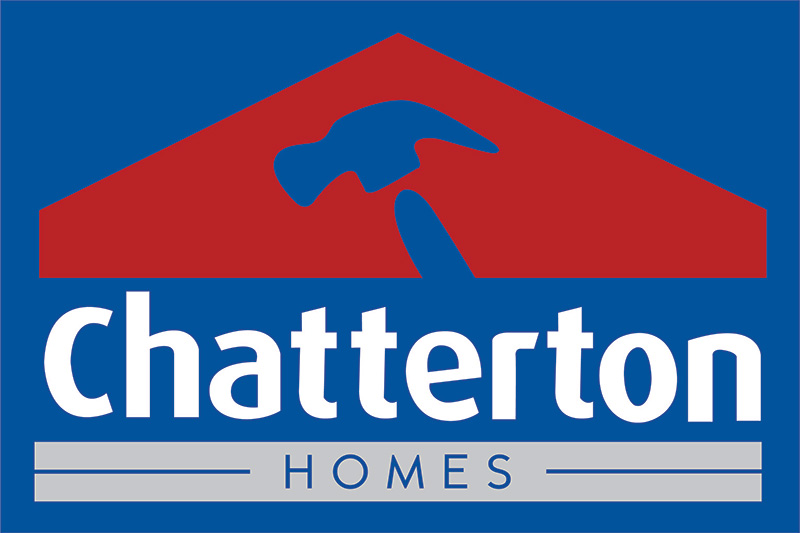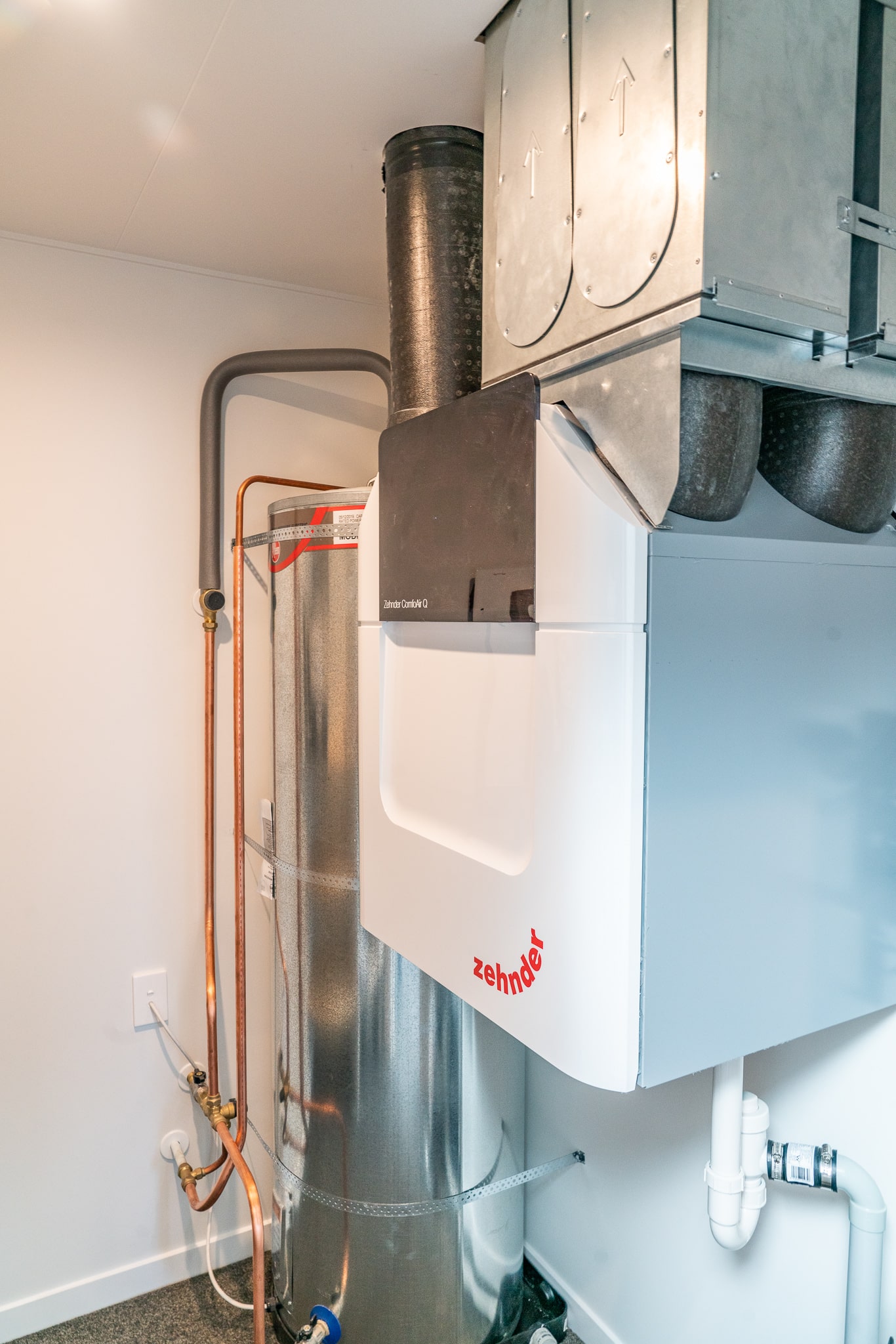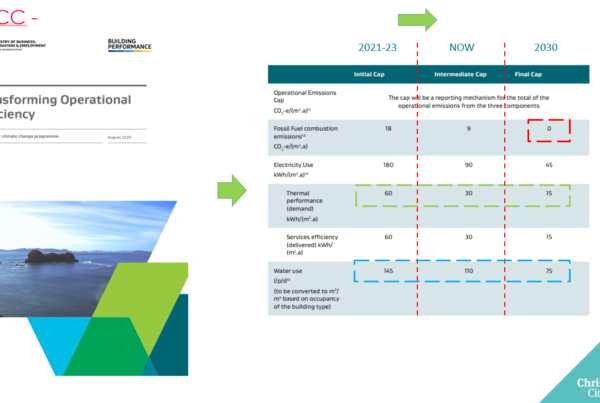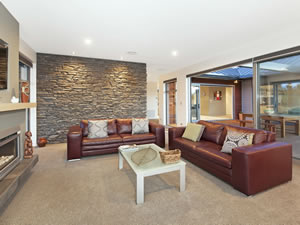Benziger (1979) defined thermal comfort as ‘a state in which there are no driving impulses to correct the environment by behaviour’. In the absence of thermal comfort, stress symptoms surface, with associated negative health effects.
The study went on to identify that a well-designed forced ventilation system and an airtight building envelope were sufficient to dilute indoor air contaminants to levels below concern. An efficient heat recovery ventilation system was found to be the most advantageous option, addressing both indoor air quality and thermal comfort, plus when taking all things into consideration it was found to be economically viable.
Source: Healthy and affordable housing in New Zealand: the role of ventilation-Rosemeier, Kara, University of Auckland
………………….
Background to Blog:
It’s not every day you get to design and build your own home!
Even as building company owners we go through the same thought processes and have similar desires, fears and constraints to everyone else when it comes to our new home.
This series of blogs is all about our build journey!…………What we have learnt, what worked well and how we worked through any hurdles that arose. We will experience similar situations to our clients and maybe by following our journey you may learn something, or perhaps feel more relaxed, or confident, about the build process, or at least have a laugh!
…………………..
Our ‘Forced’ Ventilation Choice
In our high passive home we are installing a Zehnder Comfo Air Q450 Mechanical Heat Recovery Ventilation Unit.
These are one of the dearer units on the market but they are also one of the best performing.
The advantages of the Zehnder Comfo Air Q is that it is ultra-efficient, with heat recovery up to 96% efficient. It also uses reduced power consumption and has quiet operation due to its low noise emissions. This means it can be placed inside our home without being a noise nuisance.
The Zehnder is a centralised system comprising of a central unit with ducting to extraction and supply vents throughout your home. There are de-centralised units. These generally cost less but are not as efficient or effective.
There are currently three different models depending on the house volume. We could have used a 350 model for our home but the system would have been operating be at the upper end of its capacity for a house of our size, so we decided to get a better efficiency with a slightly higher outlay for the next size up unit.

Picture: Zehnder Comfo Air Q450 Central Unit

Picture: Accessories including ducting & vents, plus plan
Dependent upon budget and what you are trying to achieve there are a number of options out there, some arguably better than others. Do your research and use the expertise available to assist your decision.
What Is An MHRV and What Does It Do?
This system uses the heat in stale exhaust air to preheat incoming fresh air, with the aid of a fan. This reduces the energy required to bring outside air up to ambient room temperature. Like the human respiratory system, this exchange of air is performed in a single area of the home, the ventilator core (aka a central unit).

Picture: How the heat recovery works – Source: Zehnder
In a typical situation fresh air is supplied to bedrooms and living areas, and exhaust air is extracted from the kitchen, toilets and bathrooms (along with moisture in the air). Most heat can be recovered from outgoing air, and transferred onto supply air, when an efficient heat exchanger is used.
Outgoing air and incoming air never mix in the heat recovery process as the heat is conducted through a thin plate that keeps the airways separate. Both outgoing and incoming air are the same volume. This means the home will not be pressurised (or de-pressurised). This is where the term ‘Balanced Ventilation’ comes from which is also used to describe this type of ventilation.
Additionally, stale air containing any contaminants, spores or allergens is forced outside and fresh filtered air is allowed in, improving air quality and a healthier living environment. Humidity is also controlled as the moisture in the air is managed. This has other advantages such as reducing the risk of damage to the building’s integrity through water diffusion into the building structure.

Picture: Condensation is a risk to health and potentially to the building integrity over time
Most allergen causes are eliminated when a highly efficient heat recovery unit is installed. The better units, clean and circulate the air in a room providing a continuous supply of fresh pollen-free air. The air volume is replaced once every three hours and does not release ozone back into the air from the filtration process. This maximises comfort, especially for those with allergies or respiratory problems.
As an example, a Zendher MHRV can remove 98% of pollen from your air before you breathe it and specialist filters block particles 3 times thinner than a human hair!

Picture: Allergens such as dust mites significantly reduced
Forced ventilation breaks the reliance on wind and occupant behaviour to provide good indoor air quality, and a fan becomes the main driver for ventilation.
The ‘efficiency rate’ of a heat recovery unit determines how much energy will be saved by using that particular device. Although it requires the operation of a fan on a continual basis, the energy recovered from the inside air is many times that of the energy required for the fan. Typical efficiencies work up to 75%, but some very efficient European models are rated much higher. For example, the Zendher Comfo Air offers up to 96% heat recovery. This results in huge energy savings over the unit’s full life cycle.
Efficiency & Airtightness
The MHRV sounds pretty good, but for a balanced discussion what else should be considered?
A major point to consider, referred to at the start of this blog, is that the efficiency of these units is closely affected by the level of airtightness within the building envelope. Basically, the more airtight the building envelope the more energy there is to recover and the more efficient the unit.
Therefore, house design and the materials used are intrinsically linked to the ventilation systems used, which in turn is based upon what you as the homeowner are trying to achieve in your new home.
In our opinion, it is worth investing in quality. If you are investing in other areas of your homes performance now is not the time to scrimp on ventilation.
Secondly, ‘cost’ is an important consideration as an efficient system, as described above, does cost more to install than some ventilation systems which are not designed for the purposes described above, or are much less efficient at either controlling the indoor environment in terms of comfort and air quality, or the amount of heat recovery that takes place.
At the mid-higher end European MHRV units may be around $10-18,000 but this is a one-off cost that must be factored against all the ongoing benefits of a high performing home in terms of thermal comfort and air filtration. The cost will also depend on what you need for your home, and what it is you are trying to achieve.
How much space is needed?
The central unit we are installing is only 566mm deep, just under 1.5m high and 924mm wide. It easily sits into a cupboard and its depth is less than that of a cupboard. Despite having a very large storage room in our home. this will fit nicely into the narrow side, in the corner, thereby maximising the store rooms useful space.

Picture: The same type of central unit we will be installing
The ducting is an important consideration as you need a cavity big enough to house the ducting that can access every room in the house. Stud ceilings are easier as there is plenty of space but ample cavities are required where ceilings are raking, or strategically placed bulkheads etc.
A plan for the unit and ducting placement will accompany the quote so you can view the recommended placement early in the process and consider any issues at that time.
In Conclusion
The MHRV is a worthwhile investment. This is because it is an integral part of a package of items, including air tightness, prescribed in the design of your house to achieve a healthy comfortable indoor environment, with the benefits, of constant warm temperatures, no mould or spores, controlled humidity and protection of the building fabrics integrity.
There are a number of systems out there but discussions with your builder and designer will assist you to find the right system for you, your build and your budget.





